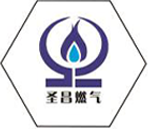
Nov . 10, 2024 05:32
Back to list
Exploring the Efficiency of Heat Exchangers in Modern Thermal Systems
Understanding Heat Exchangers Principles and Applications
Heat exchangers are crucial components in various engineering and industrial processes, designed to efficiently transfer thermal energy (heat) from one medium to another. This process occurs without the two fluids coming into direct contact, which is fundamental in applications ranging from HVAC systems to power plants and chemical processing. This article delves into the principles behind heat exchangers, their types, and their significance in modern engineering.
Basic Principles
The primary function of a heat exchanger is to transfer heat between two or more fluids, which can be liquids, gases, or a combination of both. The key principle behind heat exchangers is the second law of thermodynamics, which states that heat naturally flows from a hotter object to a cooler one. In essence, heat exchangers facilitate this transfer in a controlled and efficient manner to optimize energy consumption and improve temperature regulation in various systems.
The effectiveness of a heat exchanger is influenced by several factors, including the temperature difference between the fluids (the driving force for heat transfer), the surface area available for heat transfer, and the flow arrangement of the fluids. There are typically three flow configurations utilized counterflow, parallel flow, and crossflow. Each configuration has its unique advantages and is chosen based on the specific requirements of the application.
Types of Heat Exchangers
.
1. Shell and Tube Heat Exchanger This type consists of a series of tubes, one set carrying the hot fluid and the other the cold fluid. They are widely used in industries for their robustness and high heat transfer capability.
مبادل حراري

2. Plate Heat Exchanger Comprised of thin plates stacked together, this design promotes high surface area contact between the fluids and is commonly used in applications requiring efficient heat transfer with minimal footprint.
3. Air-Cooled Heat Exchanger These are used where cooling with water is impractical. Fans are employed to pass ambient air over finned tubes, allowing heat to dissipate efficiently into the atmosphere.
4. Double-Pipe Heat Exchanger This is a simpler form where one pipe is inserted into another. It is most suitable for straightforward heating or cooling tasks with a limited flow rate.
5. Spiral Heat Exchanger This type features two spirally wound channels, allowing fluids to flow in a counter-current manner. They are particularly effective for applications involving viscous fluids or where space is limited.
Applications and Importance
Heat exchangers are integral in various industries, including power generation, petrochemicals, food processing, and HVAC systems. In power plants, they are essential for maintaining optimal operating temperatures and enhancing energy efficiency. In the food industry, they play a vital role in pasteurization processes, ensuring food safety while preserving quality.
Additionally, with the growing emphasis on energy efficiency and sustainability, the demand for advanced heat exchanger designs continues to rise. Engineers are focused on developing innovative materials and configurations that can withstand higher temperatures and pressures while maximizing heat transfer efficiency.
In conclusion, heat exchangers represent a foundational technology in engineering that underscores the importance of thermal management in industrial and commercial applications. Understanding their principles, types, and applications is crucial for professionals striving to enhance energy efficiency and optimize processes in today's fast-paced world. As technology continues to advance, the role of heat exchangers will become increasingly pivotal in addressing global energy challenges.
Latest news
-
Safety Valve Spring-Loaded Design Overpressure ProtectionNewsJul.25,2025
-
Precision Voltage Regulator AC5 Accuracy Grade PerformanceNewsJul.25,2025
-
Natural Gas Pressure Regulating Skid Industrial Pipeline ApplicationsNewsJul.25,2025
-
Natural Gas Filter Stainless Steel Mesh Element DesignNewsJul.25,2025
-
Gas Pressure Regulator Valve Direct-Acting Spring-Loaded DesignNewsJul.25,2025
-
Decompression Equipment Multi-Stage Heat Exchange System DesignNewsJul.25,2025

